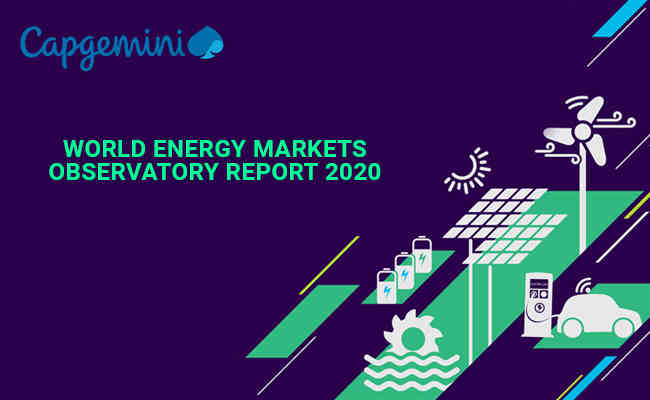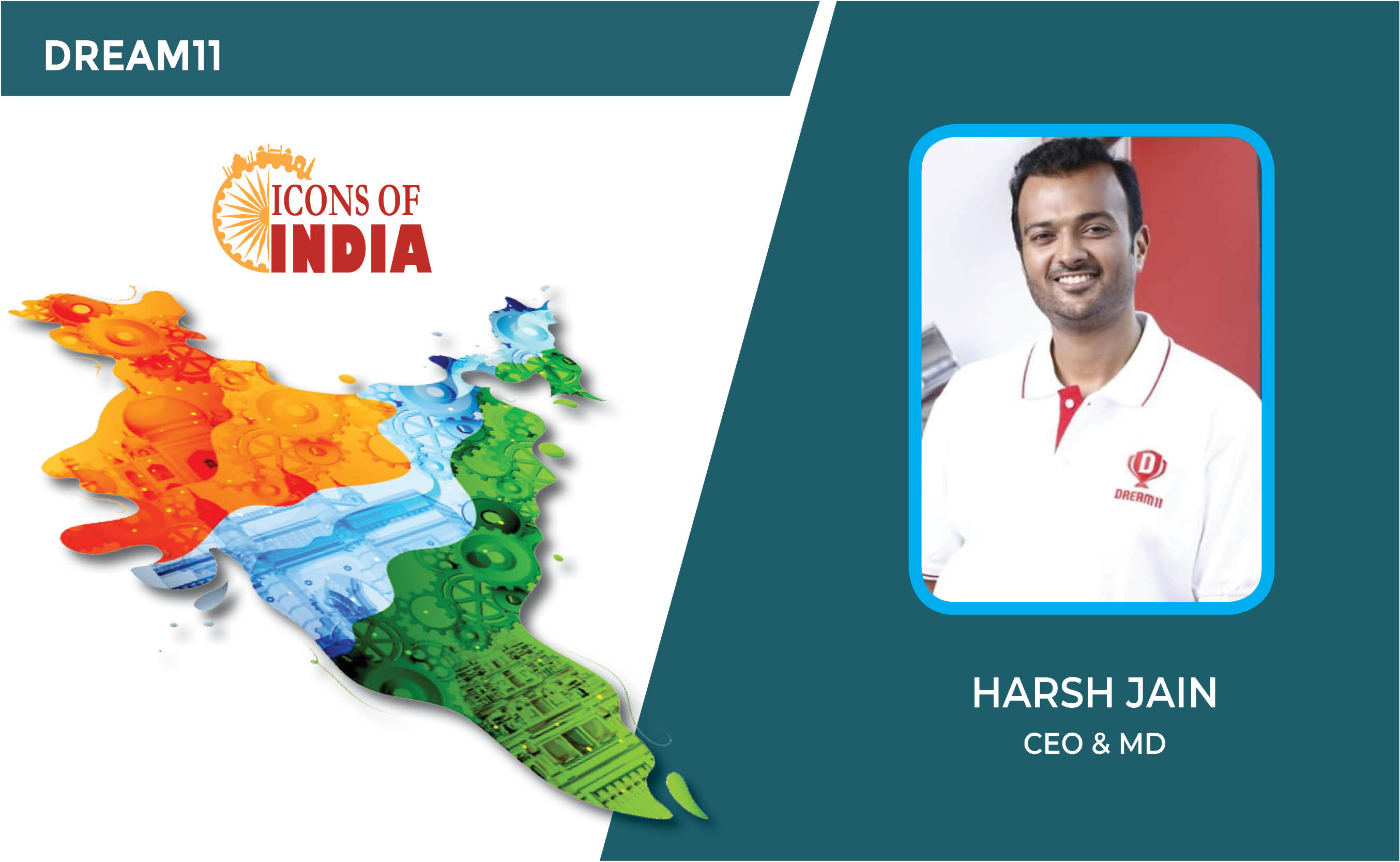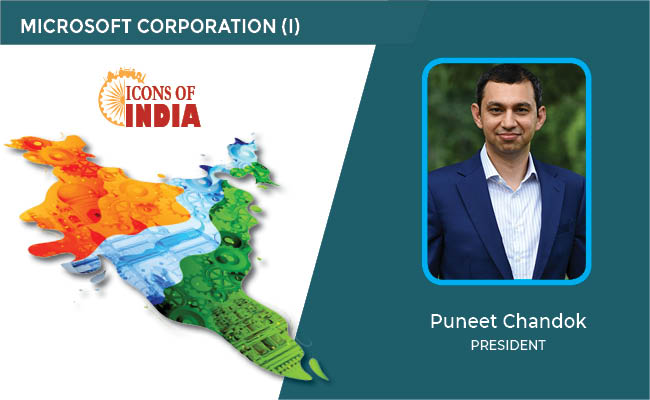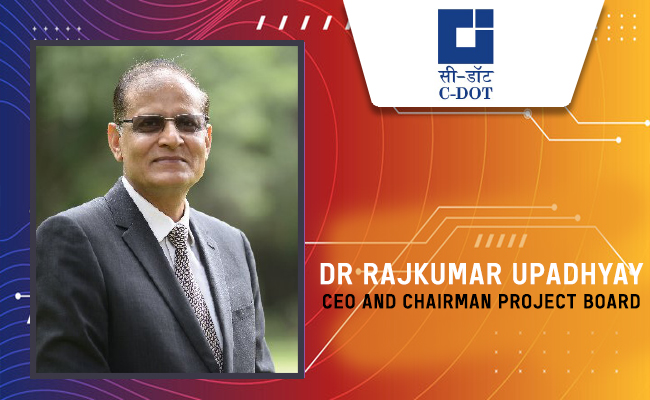Capgemini's World Energy Markets Observatory report 2020
By MYBRANDBOOK

Capgemini has published its 22nd edition of its annual study, the World Energy Markets Observatory (WEMO) report, created in partnership with De Pardieu Brocas Maffei, Vaasa ETT and Enerdata.
This year’s edition of WEMO reflects two opposing narratives: in 2019 a continuation of previous trends related to energy transition, renewables and storage technology progress, climate change issues, and energy markets evolution; and the profound industry-wide impact of COVID-19 in 2020 that will reset the baseline and establish a so-called “new normal”.
Key points of the 2020 edition of the World Energy Markets Observatory report include:
1. The significant drop in consumption due to COVID-19 has led to the largest reduction of greenhouse gas (GHG) emissions since World War II, but long-term climate change goals are still very challenging
With the worldwide economic growth slowdown in 2019, GDP growth for G20 countries was 0.8 points below the previous year. Energy demand growth slowed down with consumption increasing by just 0.7 percent, as compared to 2.2 percent in 2018. While global emissions continued to increase by 0.6% in 2019 (highest level ever), those in the energy sector specifically fell 0.4 percent due to a combination of factors including: a shift from coal to gas; renewables growth; and energy efficiency improvements. The significant drop in consumption due to COVID-19 has led to the largest reduction of GHG emissions since World War II. In fact, emissions are expected to decrease by an estimated 7 to 8 percent in 2020, as a result of mobility restrictions and a sharp industrial slowdown.
Despite the seemingly positive data in 2020, according to Colette Lewiner, Energy and Utilities senior advisor at Capgemini, these reductions are temporary: “This 2020 emissions decrease is linked to the lock-down period and remaining mobility restrictions. Emissions will likely rise again as the world recovers from the pandemic. By way of illustration, it would take a similar restriction, every year for the next 10 years, to get on the right environmental trajectory, which is of course unviable. Profound changes are needed to reach climate change objectives.”
2. Generation from renewables and storage technologies are maturing quickly
Renewables account for more than half of the worldwide electricity generation investments, more in developed countries and less in developing countries that continue to build coal and gas plants to meet a booming electricity demand. With the growing renewables market and the progress of technology achievements, costs are declining again by more than 10% (Wind and Solar) in 2019, with consistently lower costs being recorded month after month. Offshore wind now seems promising while onshore acceptance remains the problem.
Batteries for electric vehicles and stationary storage costs decreased again by 19% in 2019 (for Li Ion batteries), and 115 mega-factories’ projects have been recorded, out of which 88 are in China. Asian players (China, Japan and South Korea) are dominating this market.
Meanwhile, Europe is clearly making strides in developing hydrogen as a source of green power to make up for the dominance it has lost in batteries and solar panels. In July 2020 the European Union commission decided to invest between €180-470 bn by 2050 to reach a share of 12-14% in 2050 for green hydrogen in the European energy mix. Germany and France stimulus plans will allocate respectively €9bn and €7bn for hydrogen development.
3. The growing share of renewables in the energy mix coupled with the closure of schedulable generation, means grid reliability becomes a concern
With the increasing share of intermittent renewables generation (wind and solar power), grid balancing is more difficult, and security of supply could be endangered. This situation was illustrated both in Europe and the US this year:
-In April 2020, during lockdown, electricity consumption decreases in Europe, combined with sunny and windy weather, resulted in high shares (up to 60 to 70%) of renewable electricity on the grid. Near blackouts happened in Germany and in the UK, demonstrating that grids and regulations have not adapted to deal with the high share of renewables planned for the end of the decade.
-By mid-August 2020, during a heat wave, California experienced rolling blackouts where electricity supply relies on 33% from renewables, mostly from solar energy. This is challenging on hot summer evenings, when electricity from solar generation drops to zero but demand for air conditioning remains. This challenge will intensify if California meets its targets of 60% renewable electricity by 2030 while phasing out fossil fuel and nuclear plants schedulable generation.
Philippe Vié, Global Head of the Energy and Utilities sector at Capgemini, adds: “Numerous digital tools and assets are mature and available to improve predictability, reliability, grid stability and finally security of supply, accelerating Energy Transition.”
Grid stability requires schedulable generation assets, storage or actionable consumption flexibility. Capgemini’s WEMO identifies several ways to improve grid balancing where a high share of renewable sources exists, notably through enhanced generation forecasting, non-carbon emitting storage options, and, most notably, batteries in the short term and hydrogen moving forward. Leveraging digitization, artificial intelligence and automation to enable greater accuracy of demand forecasting, demand-side management; and deploying the smart grid at scale are also strategies to improve management of a distributed energy mix. Regulatory evolution should bring incentives that stimulate positive economic signals and the right type of investments.
4. Will post COVID-19 plans stimulate a greener economy?
One third of the €750bn European recovery fund will be dedicated to sustainability and energy transition projects and Member states’ plans include similar proportions for environmental projects. According to WEMO, this is very good progress; however, the execution of those plans will be crucial. The report therefore recommends tracking these sustainability funds and reinforcement of the “green” conditionality for allocation.
To meet climate change goals while ensuring energy security of supply Capgemini’s WEMO recommends:
· Master GHG emissions: set meaningful carbon price and/or impose carbon taxes and notably on imported products, better control methane (a very potent gas) emissions
· Incentivize carbon free generation plants construction (renewables but also safe nuclear plants) to “green” electricity generation
· Incentivize electrification (notably for transportation) allowing a systemic de-carbonization of the economy
· Ensure safe grid management with a higher share of intermittent renewable sources by upgrading grids with increased digitization (changing also tariffs calculation to remunerate digital investments), imposing dynamic tariffs to increase demand-side response, and modifying the “merit order” to allow renewables curtailment when needed
· Develop green hydrogen
· Ensure that the “green” share of stimulus plans becomes a reality
The World Energy Markets Observatory is an annual publication by Capgemini that monitors the main indicators of the electricity and gas markets in North America, Europe, Asia (including China and India) and Australia. This edition covers for the first time this year pressure on oil & gas majors, that leads to diversification and carbon neutrality. The 22nd edition, which is drafted mainly from public data combined with Capgemini’s expertise in the energy sector, refers to data from 2019 as first half of 2020 (pandemic first wave impacts). Special expertise on regulation and customer behavior, as well as markets data has been provided by research teams at De Pardieu Brocas Maffei, VaasaETT and Enerdata.


Nazara and ONDC set to transform in-game monetization with ‘
Nazara Technologies has teamed up with the Open Network for Digital Comme...

Jio Platforms and NICSI to offer cloud services to government
In a collaborative initiative, the National Informatics Centre Services In...

BSNL awards ₹5,000 Cr Project to RVNL-Led Consortium
A syndicate led by Rail Vikas Nigam Limited (abbreviated as RVNL), along wi...

Pinterest tracks users without consent, alleges complaint
A recent complaint alleges that Pinterest, the popular image-sharing platf...


Icons Of India : Harsh Jain
Harsh Jain, the co-founder of Dream 11, the largest fantasy sports web...

Icons Of India : Puneet Chandok
Puneet Chandok is President, Microsoft India & South Asia and is respo...

ICONS OF INDIA : SACHIN BANSAL
Sachin Bansal is an Indian entrepreneur. He is best known as the found...


EESL - Energy Efficiency Services Limited
EESL is uniquely positioned in India’s energy sector to address ener...

ECIL - Electronics Corporation of India Limited
ECIL is distinguished by its diverse technological capabilities and it...

C-DOT - Center of Development of Telematics
India’s premier research and development center focused on telecommu...


Indian Tech Talent Excelling The Tech World - Rajiv Ramaswami, President & CEO, Nutanix Technologies
Rajiv Ramaswami, President and CEO of Nutanix, brings over 30 years of...

Indian Tech Talent Excelling The Tech World - Steve Sanghi, Executive Chair, Microchip
Steve Sanghi, the Executive Chair of Microchip Technology, has been a ...

Indian Tech Talent Excelling The Tech World - PADMASREE WARRIOR, Founder, President & CEO - Fable
Padmasree Warrior, the Founder, President, and CEO of Fable, is revolu...